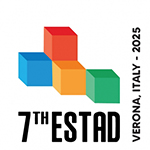Speaker
Description
Hot-rolled long products such as beams, bars, and rails are curved after cooling. Roller straightening aligns these curved long products by passing them between staggered rollers, inducing controlled, repeated elastic-plastic bending. SMS group technology for roller straightening machines is the CRS® Compact Roller Straightener, typically characterized by nine, individually driven straightening rollers.
To optimize the utilization of the system, achieve an even and controlled distribution of the total load across the drive rollers, avoid over-dimensioning of the drives, and protect the machinery from overload, the required drive torque is distributed specifically across the drives using a control system.
A new, optimized LSC has been developed by interdisciplinary cooperation within the SMS group. This new LSC features the elimination of master-slave operation, as a result it enables control when not all rolls are in operation during pulling in and out. It is independent of the process parameters (roll diameter, roll adjustment) and redistributes the total drive torque to the single drives according to a predefined pattern.
Initial functional tests were conducted on forces and drive torques calculated with the aid of finite element (FE) simulations of the roller straightening processes and with available measurements. But the successful implementation of the newly developed LSC in three industrial CRS® in the fields of railway rail, medium and heavy section production conclusively demonstrates its effectiveness.
In a following phase the quasi-static FE-model is coupled with a subsequent dynamic model in MatLab-Simulink accounting for the systems inertia. Coupling this combined model set-up with the LSC reproduces the time dependent redistribution drive torques and product’s velocity.
The new optimized LSC offers benefits such as reduced total drive capacity, decreased roll wear, reduced experimental effort during commissioning and improvement of product quality. Furthermore, it can be implemented on cantilever and vertical straightening machines as well.
